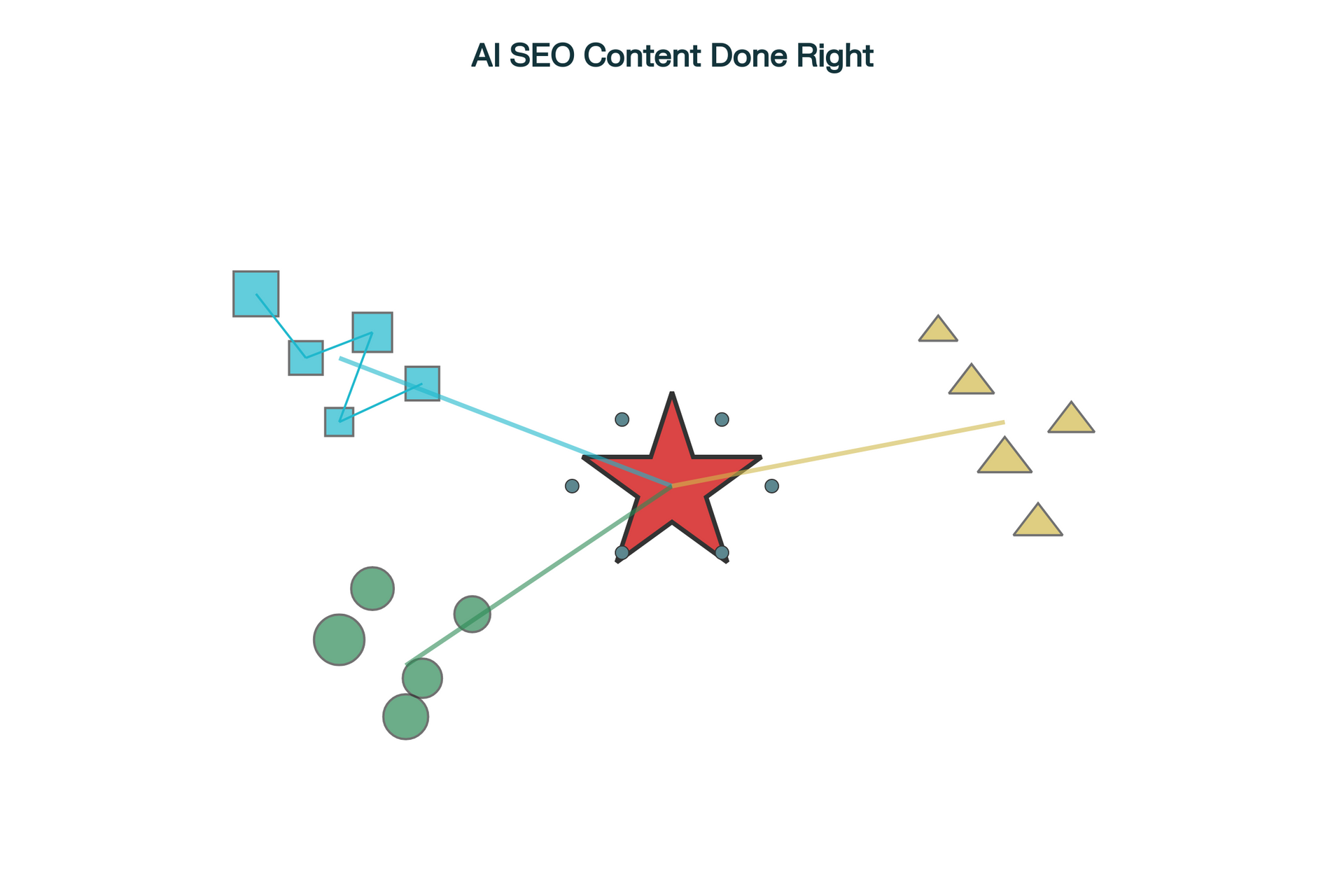Discovering Your Community: Churches and Religious Organizations
Discovering Your Community: How the Digital Door Opens for Churches and Religious Organizations
TL;DR:
In a world where people search online for meaning, belonging and a place to worship, your church’s digital presence is more than a bulletin board—it’s the first handshake. This article maps the path for churches and faith-based organizations to optimize their websites for visibility, strengthen community outreach, and leverage both local- and search-engine-driven traffic. From claiming your listing and embedding your story to technical foundations, content strategy, and FAQs—this is the blueprint. Read on to equip your ministry to be found, engaged and effective online.
Table of Contents
1. Why Digital Visibility Matters for Churches
2. Local Search + Spiritual Search: Two Pillars
3. Optimizing Your Website: User Experience & Content
4. Building Authority & Trust Online
5. Technical SEO Essentials for Faith-Based Sites
6. Content Strategy: Sermons, Stories & Service Pages
7. Outreach, Community Engagement & Reviews
8. Monitoring, Analytics & Continual Improvement
9. Ethical & Mission-Driven SEO: Staying Aligned
10. The Next Step: From Click to Community Member
11. FAQs (20 Questions + Answers)
1. Why Digital Visibility Matters for Churches
Your physical location may be central, but your first interaction with most newcomers is online. Research shows many people search for “church near me” or simply “church [city]” when evaluating a place of worship. 
If your church’s website, listing or content doesn’t show up—or shows up poorly—you’re invisible to seekers, newcomers, families relocating, or people in crisis. Visibility is not vanity; it’s mission-critical.
For your organization (let’s call it “The Church” here) the digital door must open smoothly: accurate info, inviting design, relevant content, and the ability to move an online visitor into an in-person connection.
2. Local Search + Spiritual Search: Two Pillars
There are two intertwined dimensions:
a) Local search – such as “church in Lakeland FL”, “Sunday service near Winter Haven”, “family friendly church Polk County”. Local matters because physical attendance still counts. Guides stress the importance of claiming local listings and reviews. 
b) Spiritual / thematic search – such as “support group for grieving parents church”, “mission outreach church Lakeland”, “Christian community for young adults Florida”. The richer your content, the more you can capture not only proximity-based searchers but purpose-based seekers.
Combining both leads to better reach: you appear in “near me” queries, and you appear when someone is searching by need or life stage.
3. Optimizing Your Website: User Experience & Content
Your church website needs to feel like a welcome mat, not a maze. Key principles:
• Clear navigation: “Who we are”, “When we meet”, “What we believe”, “Get involved”, “Contact”. Research shows intuitive navigation correlates with visitor retention. 
• Mobile-friendly and fast: Many searchers are on phones; slow or non-responsive sites lose people. 
• Use your keywords naturally: e.g., “Community-focused church in Lakeland”, “Sunday worship service Winter Haven area”. Educate your congregation about keywords like “church near me” and “faith community [region]”. 
• Story and context: Beyond practical info, tell what makes your church unique—your mission, your community, your outreach. This helps build connection and relevance.
4. Building Authority & Trust Online
Search engines (and users) favour sites that are credible, authoritative, and trustworthy—especially in faith-based contexts. Steps to build that online authority:
• Ensure your church’s web presence is consistent: name, address, service times across website, Google Business Profile, directories. Mismatches lower trust. 
• Encourage genuine reviews and testimonies: User-generated content adds social proof, and positive reviews support local search ranking. 
• Publish meaningful content: regular sermons, articles addressing community needs, resources for life-issues. Search algorithms reward relevant fresh content.
• Backlinks and partnerships: If your church is featured in local news, has links from community organizations or mission partners, that strengthens your domain authority.
5. Technical SEO Essentials for Faith-Based Sites
Don’t skip the behind-the-scenes or you’ll pay for it in invisibility. Key items:
• Secure site (HTTPS) & mobile responsiveness. 
• Speed: images optimized, caching used, minimal bloat.
• Schema markup: Use structured data where possible to flag “Organization”, “ReligiousOrganization”, service times, location.
• Clean URLs, proper title tags and meta descriptions: For example, use “Sunday Worship | YourChurchName | Lakeland FL” rather than “index.html3”.
• Duplicate content and multi-location issues: If your church has satellite campuses, treat each location carefully to avoid cannibalizing SEO. (See guides for multi-site church SEO.) 
6. Content Strategy: Sermons, Stories & Service Pages
Your content plan should reflect both mission and SEO-smarts. Tactics:
• Create pages for key ministries: children/youth, family, outreach, recovery, mission trips. Each page targets specific keywords like “youth ministry Lakeland”, “church outreach Polk County”.
• Blog/Articles: Address life questions many are typing: “Is there a church for single moms near Lakeland?”, “Christian counselling resources Winter Haven area”, “What to expect in Sunday worship”. These help drive traffic and position your church as a community resource.
• Video and audio: Post sermon recordings, testimonies, behind-the-scenes of outreach. Search engines and users like engaging formats.
• Local event pages: When you host community events, create dedicated pages optimized with event data.
• Highlight mission/values: Use your story to differentiate. “Ninja-style” clarity: what you stand for, who you serve, why it matters.
• Update regularly. Search engines favour freshness; your audience benefits from ongoing relevance.
7. Outreach, Community Engagement & Reviews
SEO isn’t only about search engines—it’s about people finding you and joining your community. Strategies:
• Invite reviews: Ask members to share honest reviews on Google or other platforms. These act both as social proof and local ranking signals. 
• Highlight community outreach: If you serve the local area (e.g., Lakeland, Polk County), create content around that. Search engines see you as relevant to the location.
• Engage via social media and encourage social signals. That said, social signals aren’t primary ranking factors—but they widen reach.
• Use email/newsletter to drive traffic back to your website (fresh content, event pages).
• Track offline to online: If someone visits because of something they saw online, capture that journey (e.g., first-time visitor card, via website). That feedback loop helps measurement.
8. Monitoring, Analytics & Continual Improvement
You’ll know you’re doing this right if you track and respond to data. Steps:
• Install analytics (Google Analytics 4 or similar). Monitor traffic sources, keywords, behaviour. See what content leads to event registrations or visits.
• Track your Google Business Profile insights: searches, views, direction requests.
• Conduct periodic SEO audits: site speed, mobile usability, broken links, missing meta tags. Guides list “technical SEO kills”. 
• Set goals: e.g., “Increase first-time visitor website sessions by 20% in 12 months”, “Convert 10% of website visitors to sign-up for next service or event”.
• Continually refresh content: Old pages update, outdated info remove, service times changed. Freshness counts
9. Ethical & Mission-Driven SEO: Staying Aligned
Because you’re a faith-based organization, your online strategy must align with your mission and ethics—not just clicks. Points to consider:
• Accuracy and transparency: Don’t mislead with keywords irrelevant to your ministry. That erodes trust.
• Accessibility: Make your website accessible (alt text for images, readable fonts, clear navigation). That not only helps SEO but aligns with inclusive mission. 
• Privacy and data: If you collect visitor info (newsletter sign-up, contact forms), ensure compliance and ethical handling.
• Authenticity: Your online presence must reflect your real community and worship experience—if the digital face promises one thing and the in-person experience is very different, you risk negative reviews and reputation damage.
10. The Next Step: From Click to Community Member
Your digital door opens; now you have to guide people inside. Some tactics:
• On your landing pages, include a clear “Plan a visit / Get engaged” call to action.
• Offer a downloadable visitor guide: what to expect, service times, children’s ministry, location.
• Use online forms: contact us, request prayer, volunteer opportunities. Each is a bridge from online to offline.
• Follow-up: If someone signs up as a visitor online, ensure they get welcomed—either an email, call, or in-church welcome. That builds retention.
• Measure conversions: traffic → engagement → visit → membership or involvement. Use that to refine content and flow.
FAQs: 20 Questions & Answers
1. Q: Why does my church website need SEO?
A: Because most people looking for a church begin online. Without SEO, your church may never be found when someone searches “church near me” or “[city] Christian community.”
2. Q: What is local SEO and why is it important for churches?
A: Local SEO means optimizing for searches done by people in your geographic area. For a church, that means being found when someone in or near Lakeland (for example) searches for a place of worship. Without local optimization you miss the audience physically able to attend.
3. Q: What are the most effective keywords for a church?
A: Often simple phrases like “church in [city]”, “Sunday service in [city]”, “family friendly church [region]”, “Christian community [city]”. You can expand into need-based keywords like “support group church [city]”. Guides emphasize starting with a few local phrases. 
4. Q: How do I optimize my Google Business Profile for our church?
A: Claim the listing, fill in accurate name/address/phone/service times, choose correct category (Religious Organization/Church), add high-quality photos, respond to reviews, update regularly with posts and event info. 
5. Q: Does site speed really matter?
A: Yes. Search engines favour faster sites and users will leave if pages take too long. For a church website aiming for broad reach, speed is a bottom-line issue. 
6. Q: How often should we publish content like blog posts or sermons online?
A: Regularly. While there’s no fixed cadence, the goal is consistent freshness—monthly or bi-weekly at minimum. New content keeps your site relevant to search engines and your community.
7. Q: What about reviews—how much do they impact our church’s online visibility?
A: Quite a bit. Reviews act as social proof and local ranking signals. Encouraging your community to leave genuine reviews is one of the six keys for church SEO. 
8. Q: Can we optimise for more than one location if our church has multiple campuses?
A: Yes—but it must be handled carefully. Each location should have distinct pages, localised content, unique service times. Avoid duplicating content across campuses. Guides on multi-site church SEO discuss this. 
9. Q: What content resonates with people visiting a church website?
A: Real-life stories of community impact, clear explanation of who you are, what to expect when someone visits, ministries you offer, and ways to get involved. Also include call-to-action for first-time visitors.
10. Q: Should we invest in paid search (ads) or just organic SEO?
A: Both have roles. Paid search can give immediate visibility, especially for events. Organic SEO is sustainable. Prioritise a strong organic foundation but allocate budget to ads when you have specific campaigns.
11. Q: What mistakes do churches often make with SEO?
A: Common mistakes: ignoring local listings, inconsistent address/name info, slow mobile-unfriendly site, negligible content, no follow-up for online visitors, neglecting reviews.
12. Q: Is it okay to optimise for keywords like “church near me” or “best church [city]”?
A: Yes—so long as they’re accurate. Use them naturally in copy, titles and metadata. But don’t mislead. Your church must deliver what you promise.
13. Q: How do we measure success for our church’s online presence?
A: Key metrics: organic search traffic, local listing views/queries, website conversions (visitor sign-up, info request), first-time visitor attendance (tracked where possible), engagement on blog/social, review volume and sentiment.
14. Q: What’s the role of mobile users for church websites?
A: High. Many people will search on mobile for “church near me” while on the go. Mobile-friendly design and fast load times are essential. 
15. Q: How do we handle service times, event updates, and holidays on the website?
A: Create dedicated pages or sections for service times and upcoming events. Update frequently. Use schema markup for events if possible. Ensure holiday services are prominently featured with correct date/time.
16. Q: Can blog posts on faith, community and life-issues help our SEO?
A: Definitely. They help you target need-based search queries, position your church as a resource, and draw people in who may not yet be searching for “church” but are searching for help, meaning, and community.
17. Q: How long will it take to see results from SEO efforts for our church?
A: It depends. Some changes (claiming listings, fixing address consistency) can show visible improvement in weeks. Content and backlink building typically take 3-6 months to show meaningful traction. Patience + consistency wins.
18. Q: Should we use Schema markup on our church website?
A: Yes. Applying structured data such as “ReligiousOrganization”, “PlaceOfWorship”, event schema helps search engines understand your site’s content, which can improve visibility.
19. Q: How do we maintain ethical integrity while doing SEO for our church?
A: Be transparent, align keywords and content with your actual mission, avoid keyword stuffing or misrepresentation, ensure accessibility for all visitors (including those with disabilities), protect visitor data, and deliver on the promises your online presence makes.
20. Q: What’s the single most important step we can take right now?
A: Claim or audit your Google Business Profile (or equivalent local listing) and correct/confirm your church’s name/address/phone/service times. This is the foundation for local search visibility. Without this, other efforts are weakened. 
e that made them feel welcome—or one that wasn’t ready.
Introduce the idea: your website + local listings = first impression. If the front door is messed up, no one enters.
Mention: local search vs thematic search. Explain in plain language. Use analogies (e.g., “It’s like your church sign on the highway, but now it’s digital and layered with content”).
Contact Us
We will get back to you as soon as possible.
Please try again later.






















